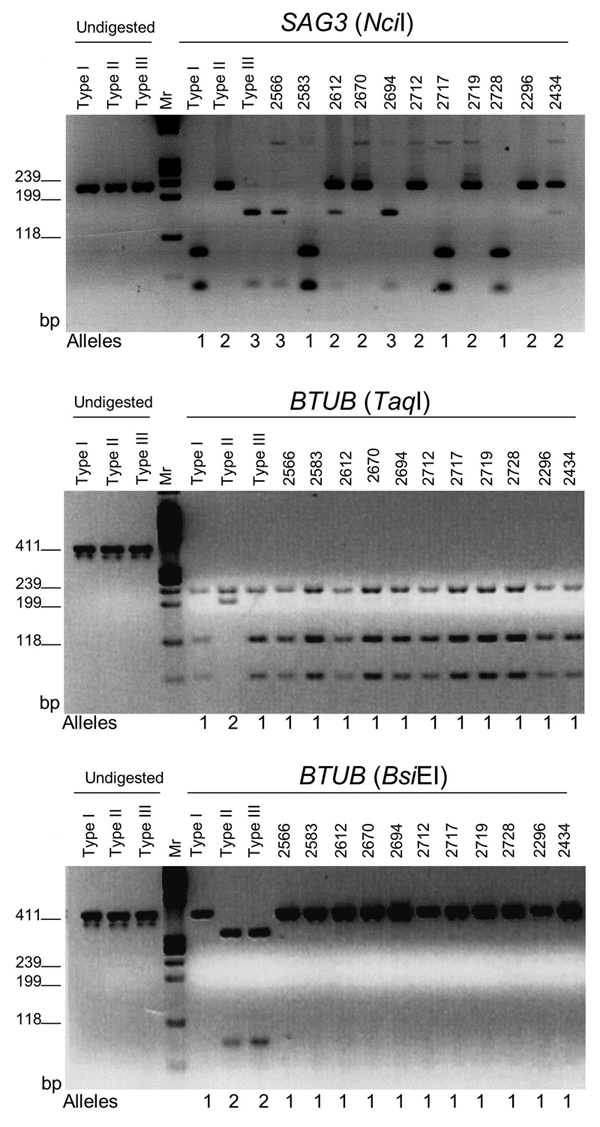Volume 12, Number 6—June 2006
Research
Genetic Divergence of Toxoplasma gondii Strains Associated with Ocular Toxoplasmosis, Brazil
Figure 2

Figure 2. Polymerase chain reaction–restriction fragment length polymorphism (PCR-RFLP) analyses of clinical isolates from Brazil compared to analyses of clonal strains. Shown are the PCR markers SAG3 and BTUB, with their respective restriction digests. Alleles are designated below each figure panel and match those given in the Table. Agarose gel electrophoresis of undigested and restriction digested products for type stained (type I RH, type II Me49, type III CTG). Products were resolved on 3% agarose gels strains with ethidium bromide. Mr refers to size markers from φX174 digested with HaeIII.
Page created: January 04, 2012
Page updated: January 04, 2012
Page reviewed: January 04, 2012
The conclusions, findings, and opinions expressed by authors contributing to this journal do not necessarily reflect the official position of the U.S. Department of Health and Human Services, the Public Health Service, the Centers for Disease Control and Prevention, or the authors' affiliated institutions. Use of trade names is for identification only and does not imply endorsement by any of the groups named above.